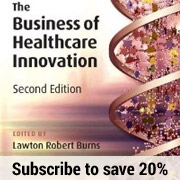ABSTRACT
Policymakers can use cost-effectiveness analysis to set value-based prices (VBP) for new pharmaceuticals. However, the uncertainty of investigational drug benefits complicates this pricing strategy. Such complexity stems from decision-makers’ risk aversion and the potential change in the estimated value with emerging evidence. The recent surge in drugs approved via the Accelerated Approval (AA) pathway in the U.S. has made incorporating uncertainty into VBP crucial. We propose to estimate risk-adjusted VBP (rVBP) for drugs with uncertain benefits via integrating value of information and expected utility theory. Our approach involves two assessment points: an initial assessment with existing evidence; and a reassessment with new evidence that reduces uncertainty. This approach enables decision-makers to set rVBP in the initial assessment such that the expected utility, from the exisiting evidence, aligns with the benchmark uncertainty. We evaluate two benchmarks: one with no uncertainty, and one with a decision-maker’s acceptable uncertainty level. We show in a case study of a hypothetical AA drug that rVBP may be lower than traditional VBP, especially under high risk aversion or low acceptable uncertainty. Our methodology adjusts VBP to account for uncertainty, supporting decision-makers in balancing timely market access with the risks associated with uncertainty in the benefits of new pharmaceuticals.
Read the full post on Wiley: Health Economics: Table of Contents


